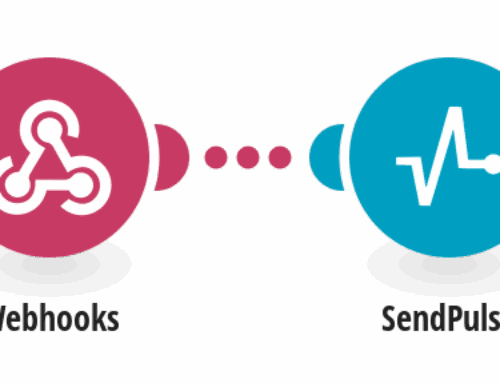Streamlining Your CRM Processes with HubSpot, Salesforce, SalesLoft, and Slack
Understanding the Integration Landscape
Businesses today are powered by data, and Customer Relationship Management (CRM) systems like HubSpot, Salesforce, and SalesLoft have become crucial tools for managing this data. But what happens when these platforms work together? Integration is the key. By connecting your CRM systems with communication tools like Slack, you can create a seamless flow of information that helps teams collaborate more effectively.
Imagine trying to juggle several balls at once—your CRM platforms are those balls. Integration acts like a skilled assistant, ensuring none of them hit the floor. This synchronization allows businesses to track interactions with prospects and customers more efficiently, streamlining processes and increasing productivity.
Benefits of Integrating HubSpot CRM with Salesforce and SalesLoft
By integrating HubSpot with Salesforce and SalesLoft, companies can enjoy numerous benefits. First and foremost, it reduces manual data entry. Instead of inputting contact details multiple times across different platforms, integration ensures information is automatically updated across all systems. This not only saves time but also minimizes the risk of error.
Additionally, the integration facilitates better data analysis. With all customer information in one place, sales and marketing teams can easily access reports and insights that inform strategic decisions. Imagine having a crystal ball that tells you where to focus your efforts; with integrated CRMs, that’s precisely what you get.
Enhancing Communication through Slack Notifications
Slack has emerged as a powerhouse in workplace communication, and integrating it with CRM systems can take its utility even further. By sending automated notifications to Slack channels, teams are kept in the loop about important updates without needing to switch between applications constantly.
Think of Slack notifications as your personal news ticker. They provide real-time updates on client activities, pipeline changes, or meeting reminders, ensuring everyone remains informed and agile in their responses. It’s like having a dedicated team member who’s always on top of things, reminding you of critical tasks and developments.
Setting Up the Integration: A Step-by-Step Guide
Setting up these integrations may seem daunting, but it’s quite straightforward with the right approach. Begin by assessing your current workflows and identifying key areas where integration would boost efficiency. Once you’ve mapped out your needs, it’s time to dive into the technical setup.
You’ll need to ensure that all APIs and permissions are correctly configured, which often requires coordination between IT departments and platform support teams. However, don’t worry; most CRM platforms offer extensive documentation and support services to guide you through the process.
Maintaining Data Integrity Across Platforms
When integrating multiple systems, maintaining data integrity is paramount. This means ensuring that the information transferred between platforms is accurate, complete, and consistent. Automated data syncing should be set up to occur at regular intervals to avoid discrepancies that could lead to poor decision-making.
It’s like assembling pieces of a puzzle—you need to make sure every piece fits perfectly, or the whole picture will be skewed. Routine checks and audits will help in maintaining the data’s reliability, playing a crucial role in the overall success of the integration strategy.
Overcoming Common Integration Challenges
While integrating these powerful CRM platforms, you might encounter some hurdles. Technical issues due to incompatible software versions or overly complex workflows can stall your progress. It’s essential to address these challenges head-on with a robust troubleshooting plan.
Consider these challenges as speed bumps rather than roadblocks. With patience and persistence, and perhaps a little expert advice, you can smooth out these bumps and keep your integration project on track. Remember, a well-integrated system promises long-term gains that far outweigh temporary setbacks.
The Future of Integrated CRM Systems
As technology evolves, so too will the capabilities of integrated CRM systems. Artificial intelligence and machine learning are already beginning to play roles in predictive analytics and automated customer engagement processes. The future holds even greater potential for more seamless, intelligent integrations.
Picture a world where your CRM doesn’t just store data but proactively guides your business strategy. That’s the direction we’re heading, and integrating technologies today paves the way for a smarter, more efficient tomorrow.
Conclusion: Embrace Integration for Success
For businesses aiming to stay ahead of the curve, embracing CRM integration isn’t just an option—it’s a necessity. By bringing together the strengths of HubSpot, Salesforce, SalesLoft, and Slack, companies can unlock new levels of efficiency, collaboration, and insight. The path to streamlined operations and improved customer relationships begins with integration.
Frequently Asked Questions
What is the main benefit of integrating HubSpot CRM with Salesforce and SalesLoft?
The primary advantage is the seamless flow of data across platforms, reducing manual entry and allowing for more accurate, comprehensive data analysis.
How do Slack notifications complement CRM integration?
Slack notifications provide real-time updates on CRM activities, ensuring that team members remain informed and can respond quickly to changes or new information.
What are common challenges in CRM integration, and how can they be overcome?
Challenges include technical issues and incompatible software versions. Overcoming these involves robust troubleshooting plans and possibly seeking expert guidance.
How do integrated CRM systems benefit long-term business objectives?
They enhance efficiency and collaboration, leading to better customer management and strategic business planning through detailed insights and analyses.
What does the future hold for CRM integrations?
Future integrations will likely incorporate AI and machine learning, leading to more advanced predictive analytics and automated customer interaction processes.









